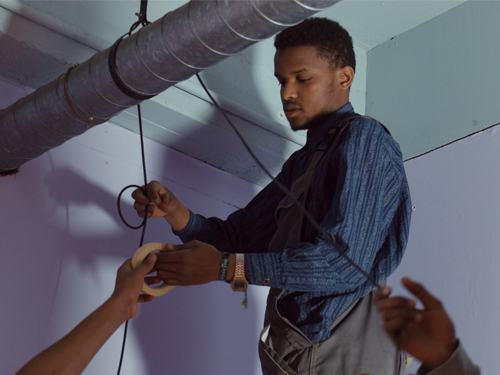Week 8/2023
This week’s agenda offers three different perspectives on how space and living relate to each other. In La vie en kit (2022), architect-filmmaker Elodie Degavre revisits three Belgian participatory housing developments created in the post-revolutionary aftermath of May ’68 and in strict collaboration with the inhabitants of the building sites. In De cierta manera (1974), Sara Gómez also set her story in a new housing district, Miraflores, built by the very people who would live there, the former residents of a shanty-town just outside Havana. This was a product of one of the first collective efforts realized immediately after the triumph of Castro’s revolution. Alongside professional actors, some of the real-life characters of Miraflores play themselves.
Grands travaux (2016) also both documents and stages that which gives shape to the lives of a group of young students of a vocational school in the center of Brussels. The title refers to the major construction works that were carried out in the capital in the fifties and sixties, turning the city into a site of perpetual demolition and construction, as it is still today. A protagonist of La vie en kit, Brussels architect Lucien Kroll (1927-2022) always denounced the excesses of urbanisation and industrialization, and fought all his life against what modernism has left us: inhuman, brutal architecture that belies history. “There is something in the construction of narration which is present in architecture too,” Degavre noted. In a city struggling to take shape, Grands Travaux is also a search for form together with the youngsters who try to organize their lives inside of it, seeking a home, work, a future, and so on. Or as James Lattimer writes about De cierta manera, “story and context are insufficient concepts anyway when they’re as hopelessly intertwined as here.”

